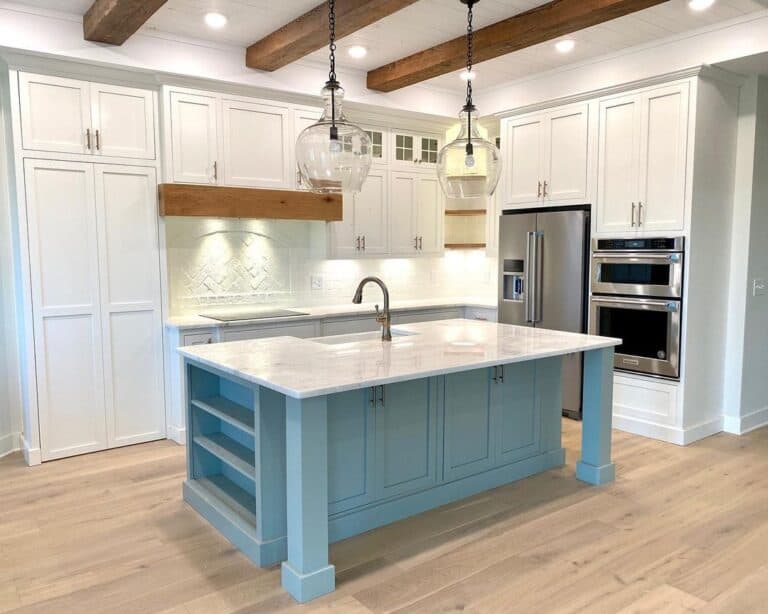Upgrade Your Kitchen's Visual with Costs Legs For Kitchen Island
Upgrade Your Kitchen's Visual with Costs Legs For Kitchen Island
Blog Article
Important Aspects to Think About When Choosing Legs For Kitchen Island
Picking the appropriate legs for a cooking area island involves a cautious analysis of multiple aspects that can significantly affect both capability and aesthetic charm. As we discover these elements, it ends up being clear that each choice can have far-reaching ramifications for the total kitchen experience.
Material Options
When picking legs for a kitchen island, comprehending the different product options is vital for attaining both visual appeal and structural stability (Legs For Kitchen Island). The selection of product significantly influences not only the longevity of the island but also its general style and capability
Metal legs, often made from stainless steel or wrought iron, add a commercial and contemporary feel while guaranteeing resilience and stability. These products are immune to use and can support substantial weight, making them ideal for bigger islands.
An additional option is crafted materials, like MDF or plywood, which can be much more affordable while still offering a range of coatings. Nevertheless, they may not provide the very same degree of stability as strong timber or metal. Products such as acrylic or glass can create a modern look, though they might call for additional assistance to make sure stability.
Inevitably, the selection of product for kitchen area island legs should line up with the desired capability and the overall motif of the kitchen area.
Design and Style

When thinking about design, the shape and surface of the legs are vital. Conical legs can supply a sense of lightness and beauty, while thicker, much more robust legs can convey strength and stability. In addition, the coating-- be it repainted, discolored, or natural-- ought to complement the cabinetry and countertop products to develop a unified appearance.
Furthermore, the design of the legs can also mirror individual taste. Customized or decorative legs, such as those including detailed makings or distinct geometric shapes, can offer as prime focus, adding character and individuality to the kitchen area. Eventually, the right selection will certainly not only boost performance but also boost the aesthetic allure, making the kitchen area island a standout function of the home.
Elevation Considerations
Picking the suitable elevation for kitchen island legs is vital, as it straight impacts both functionality and comfort. The conventional elevation for a kitchen island commonly varies from 36 to 42 inches, aligning with usual kitchen counter elevations.

It is also necessary to make up individuals' elevations and choices. Personalizing the height can make certain a comfy experience for all relative, making the kitchen area island an extra satisfying and functional room.
Weight Support
Ensuring appropriate weight support for cooking area island legs is important for both safety and security and performance. The cooking area island typically serves several objectives, including cooking, dining, and added storage, requiring a durable support framework. When picking legs, it is important to take into consideration the overall weight ability required based on the island's planned use and the materials that will be positioned on it.
The option of material for the legs plays a significant role in their weight-bearing capabilities. Solid wood, steel, and heavy-duty compounds typically give exceptional stamina contrasted to lighter materials. Furthermore, the style of the legs-- whether they are right, tapered, or have a pedestal form-- can influence their capability to disperse weight effectively across the structure.
Constantly get in touch with the supplier's requirements pertaining to lots restrictions to make sure that the legs can sustain the designated weight without compromising safety. In recap, picking kitchen area island legs with sufficient weight support is important for creating a secure and useful culinary room.
Setup and Maintenance
Proper installment and upkeep of kitchen area island legs are crucial for ensuring long life and stability. To begin, it linked here is important to adhere to the maker's guidelines throughout setup. This frequently entails protecting the legs to the island base making use of proper fasteners, making certain that the legs are level and straightened. Using a level device can help protect against wobbling and enhance the general aesthetic charm of the kitchen island.
When installed, routine upkeep is required to protect the integrity and appearance of the legs - Legs For Kitchen Island. For wood legs, periodic cleaning with a wet cloth and application of appropriate timber gloss can avoid dampness damages and maintain their surface. Steel legs may need a mild cleansing solution to eliminate oil and crud, followed by a dry towel to prevent rust formation
In addition, evaluate the legs routinely for indications of wear or damage, such as fractures or loosened joints. Tightening up screws or screws as required can likewise extend the life expectancy of the legs. By sticking to these setup and upkeep techniques, homeowners can ensure that their kitchen island remains durable and visually appealing for years to come.
Conclusion

Aesthetic coherence is click here to read critical in choosing the design and layout of legs for a cooking area island, as these elements significantly influence the general atmosphere of the area. Conical legs can give a feeling of agility and elegance, while thicker, more robust legs can convey strength and stability.Choosing the suitable height for kitchen island legs is important, as it directly affects both performance and comfort. In summary, selecting kitchen island legs with sufficient weight support is important for creating a safe and functional cooking room.
In final thought, choosing legs for a kitchen area island necessitates careful factor to consider of numerous aspects, consisting of material options, design, elevation, weight support, and setup.
Report this page